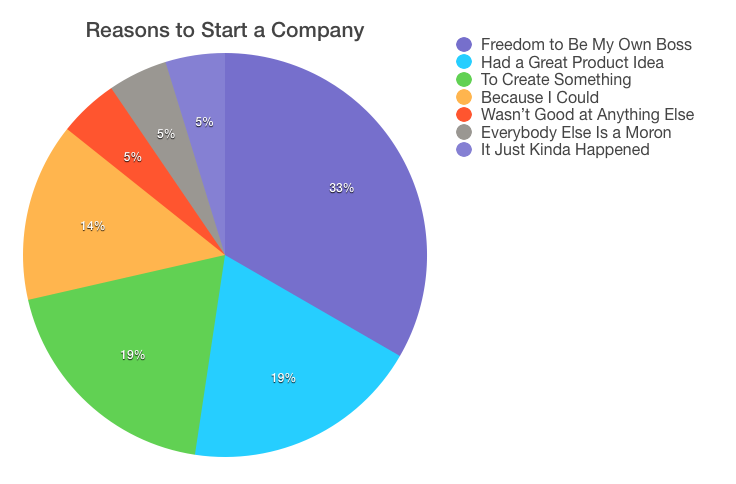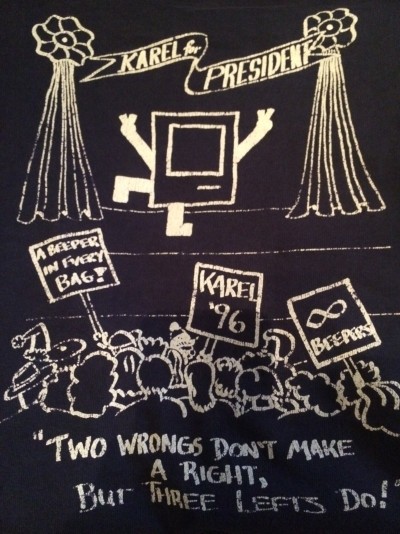In a number of recent conversations with startup founders, I’ve preceded any advice I might offer with this disclaimer: “We did things in a very nontraditional way.”
Sure, every startup takes a different path. Some focus on building a killer product before spending much on building a sales team. Others focus on early wins with a minimum viable product. But Context Optional was nontraditional in a way that is almost unheard of in the Bay Area, especially in the last several years — we eschewed traditional Series A fundraising and built a business through cashflow.
This approach has its plusses and minuses. Our rationale for doing it this way may not apply to your startup, and both Kevin and myself are ambivalent about whether we’d do it this way in the future. But at the very least, since it doesn’t seem to happen that much, I’m happy to share what we did, how we did it, and what I’ve learned from it.
A Cashflow-Based Business
It’s always seemed a little odd to me that this is so rare around here because it’s the way one would think most businesses develop. And maybe outside of our Bay Area Bubble, it is the way most businesses develop. Context Optional grew via cash. We built things that customers were willing to pay for, collected that payment, and used pretty much every penny of it to grow the business.
This approach made us different in a lot of ways. First, we had to be very in tune with what our customers wanted and we could only afford to invest in things that had value to them. We might have seen where Social Marketing was heading, but we couldn’t build too far ahead of what we could sell right then. Second, we were cheap. While we had some perks like Bagel Mondays and the often-abused-but-always-hilarious happy hours, we couldn’t hire much ahead of what we needed at the moment, and you wouldn’t arrive on day one to find a pristine Cinema Display at your desk — you’d get whatever Klep found on sale that week.
Running a startup in this manner, the challenges you face along the way, and the potential exits are all impacted by this approach in ways that may be surprising to those considering the fund raising options.
Why We Did It
Without getting into all the gory details of our “pivot” (separate post coming on that), we found ourselves in late 2007 in the position of being completely out of money but extremely well positioned. We had managed to make a name for ourselves in the new and rapidly growing frontier of Facebook Apps. We had brands lined up to talk to us about our expertise in designing viral Facebook games. And we were rapidly coming to the conclusion that there was an opportunity in building something for brands on Facebook. Clearly there was a market — every day a different cell phone company or toothpaste company was sending us an inquiry. We just didn’t yet know what the product would be. So we decided to stay afloat by doing custom development and to use what we learned by working closely with customers to build the product that they needed. It turned out that it took a few years to get there.
The goal was always to become a product company (though at one point in 2009 I tried to talk Kevin out of it. Separate post.) but “consulting” work became addictive. It paid well and we had a reputation as the best around. While this later worked against us (and competitors used it against us all the time), it’s what allowed us to survive.
In 2008 and 2009, we watched competitors emerge and raise what seemed like crazy large Series A rounds. While we did consider raising ourselves, there were two issues:
1) We didn’t see the need. We were a cash-flow positive business growing steadily. Even once we came up with the right product direction, the market for it was too nascent to justify raising a big round.
2) We presented as a consulting business. This was the real bummer. It would have been easier to raise money if we didn’t have that damn revenue on the books. Having revenue forced VCs to ask where it came from. Saying that it came from consulting automatically made them assume a lower multiple. While it was rarely explicitly stated, VCs didn’t want anything to do with a consulting business, even a profitable one with a product in development.
So we continued along, cycling every dollar from customers back into new hires and new offices.
What’s Great About Not Raising Money
The Sense of Ownership – The average founder you meet runs their company on a day to day basis, but if they’ve raised an equity round, they answer to their board. Kevin and I had no board to answer to, so we just had to answer to each other. If we wanted to “fire” a customer because they were stressing out our Account Managers and swore at our developers, we could do that. We actually did it at least two or three times. Nobody asked us to explain the dip in revenue or the loss of the customer. If we decided one day that we should pursue a new line of business, or make a small acquisition, we did it. Nobody asked us to model out the financial impact or to consider any alternatives that we didn’t agree with. The business was ours, for better or worse.
The Reality of Ownership – There’s not just a greater sense that we owned the company, but also the fact that we did. This had a MASSIVE impact on exit opportunities. When we were presented with an acquisition offer, we also had a term sheet in hand for a Series A. There were a ton of factors involved in our decision, but a big one (duh) was the financial outcome. If we took the investment, we knew that we’d have to sell for 2-3x as much just to receive the same net outcome. And it would probably take 18 months to do so. In that sense, not raising money allowed for (in our case) a bigger exit at a lower price.
Focus – We couldn’t afford to do anything that customers didn’t pay for. This made us very in-tune with what was going on in the industry and prevented us from taking the company in a direction too far ahead of what the market wanted or astray from where things eventually went. For example, we were advised back in 2008 to expand beyond Facebook into such promising social networks as Bebo, LinkedIn, MySpace, and Orkut. But since no customers (with a few exceptions) were willing to pay for that, we didn’t do it and Facebook became the place for brands to be.
What Sucks About Not Raising Money
Confidence – Particularly when it came to big hires, I personally had a hard time luring someone away from their high paying job to come work with me and our one month of cash we currently had in the bank. Over time, I got over it, but when old friends from college turned us down, I was sometimes relieved. I didn’t want to ruin the friendship by hiring them and then going out of business. In fact, my friend Nick Solter was one of our most pivotal hires, but I was terrified after he accepted that I’d let him down.
Stress – Kevin became a pro at cash-flow management and shielded me from a lot of the stress that went along with not having a ton of money in the bank. But we both felt it. It’s pretty crazy when you’re growing so fast that you have millions of dollars in receivables but can’t collect on it fast enough to pay the bills because you’ve hired a bunch of people to do all this work. This type of cash crunch is only one of the issues. There’s also the inability to spend on Marketing against competitors that have much greater resources, the fact that there’s no VC name you can throw around to get in TechCrunch, and the overall lingering sense that nobody is going to “bail you out” should you need to pursue a mercy acquisition.
The Possible Lack of Full Ownership – The flip side to the ownership advantage is the fact that if, like us, you raised a small amount of money via a convertible note, you may have given up more ownership than that level of investment would otherwise warrant. Here’s what I mean — say you raise $500k on a note, intending to eventually do a Series A. Upon raising that priced round, the $500k would represent maybe 5% (or less) of the company. But you don’t need a Series A so it never happens. The note will convert to some level of ownership (or some payout upon exit) that’s less than a VC would have taken, but a lot more than it would have converted to if you had done the Series A. One could argue that the money was much earlier so it deserves the ownership, and I don’t disagree. Our seed investor absolutely deserved the ownership. But the drawback here is that there’s no middle ground. Ideally, we would have done a small equity round that would give us some cash without giving up too much ownership, but it just doesn’t happen that way.
Next Time
One of the great things about Kevin and myself as co-founders is that we have tremendous respect for each other’s point of views. Sometimes too much. At one point, when it was clear that we were going to see an exit in the near future, Kevin said that the next time around he was going to raise a big round and avoid all the stress of managing cash so closely. I said that doing so would be crazy because a VC would have probably taken us in some other direction and it wouldn’t have been our company. We talked about it. The next time the issue came up, I’m pretty sure Kevin had become convinced that I was right and I had become convinced that he was right. This type of thing happens a lot with us.
If you ask me today what I would do next time, I’d raise the round. But it would have to be from the right VC. While the question of how you fund your company is pretty important, the question of who you work with will have a much bigger impact.





Jonathan
Thanks for the great writeup!
I had no idea there was such a stigma on consultancy companies.
admin
The stigma was known to us. What surprised us was that even if you had successfully transitioned to a product company, you would be judged and valued based on your consulting past.
Atilla Torgay
Thanks for this great article !
Nadim Hossain
As one of the entrepreneurs you shared fundraising advice with, thanks for the detailed and nuanced post. Can’t wait to see the additional installments on the Context Optional story. Glad to have you on our side at BrightFunnel!